Comprehensive Guide to GoPro Wakeboard Mounts
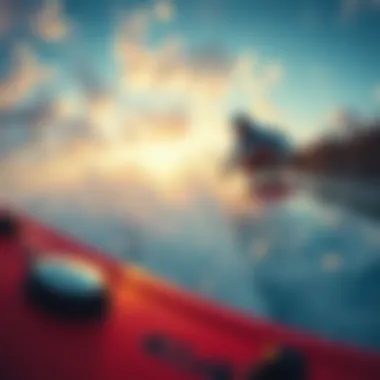
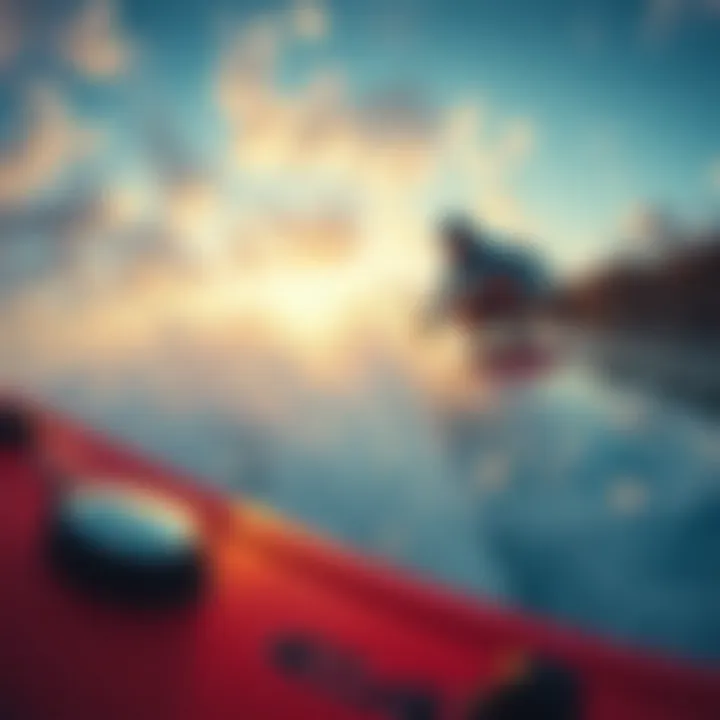
Intro
Kick-starting your journey into the vibrant world of capturing wakeboarding thrills on video demands a solid grasp of GoPro wakeboard mounts. These devices not only serve to stabilize your camera, but also to creatively frame the exhilarating moves that make the sport so mesmerizing.
The intricacies of selecting, installing, and utilizing these mounts can significantly influence the quality of your footage. When equipped with the right mounts and techniques, your videos can shift from the mundane to the breathtaking. In the following sections, you’ll find detailed insights tailored for both newcomers and seasoned riders. This guide aims to provide a stepping stone for capturing those unforgettable water moments.
Gear and Equipment
Understanding Wakeboard Mounts
When it comes to filming wakeboarding, not all mounts are created equal. Choosing the right mount often hinges on the style of your riding, the specific shots you wish to achieve, and the environment in which you are riding.
Essential Gear for Beginners
For those just gearing up, consider starting with the GoPro Chest Mount Harness. This mount positions the camera at an ideal angle to capture your upper body and hands, making for a more immersive viewing experience. Pair this with a GoPro Floaty Backdoor to keep your camera afloat in case of an unexpected dip.
- GoPro Chest Mount Harness
- GoPro Floaty Backdoor
- Curved Adhesive Mounts for smooth surfaces
Advanced Equipment for Experienced Riders
For seasoned wakeboarders looking to elevate their footage, the GoPro 3-Way Mount offers versatility. This adjustable mount allows for various shooting angles, from low and close to high and wide. If you’re into showcasing extreme tricks from different perspectives, consider the GoPro Suction Cup Mount, which can be fixed to flat surfaces on boats, enabling unique shot angles.
- GoPro 3-Way Mount
- GoPro Suction Cup Mount
"The right mount not only enhances your footage but also garners your personality as a rider."
Techniques and Tips
Installation Methods
Installing your mount correctly can make or break a session. It’s not just about slapping it on and hitting the waves.
- Clean the Surface: Always clean the surface before applying an adhesive mount. Debris can lead to a poor bond.
- Secure Placement: Ensure that your mount is mounted securely. Test its strength before hitting the water to avoid camera loss.
Capturing the Right Angles
When it comes to angles, don’t underestimate their impact. High shots can capture the wake’s spray, while low angles emphasize the board’s motion. Experimenting with different perspectives can help you discover what resonates best with your style.
Safety Considerations
Remember that your safety must come first. Here are a few reminders:
- Always check the mount’s security before rides.
- Avoid distractions while adjusting your camera to maintain focus on riding.
- Wear the appropriate gear, including life jackets and helmets, particularly in choppy waters.
Regular maintenance of your equipment, such as rinsing mounts and cameras after use in saltwater, increases their lifespan. This not only protects your investment but also ensures optimal performance for capturing your next adventure.
By keeping safety and quality filming practices at the forefront, you'll be well on your way to producing great content. In the upcoming sections, we’ll delve deeper into specific mount types and their compatibility with GoPro cameras, offering a wealth of knowledge aimed at maximizing your wakeboarding experience.
Understanding GoPro Wakeboard Mounts
When it comes to capturing breathtaking footage during wakeboarding, having the right mount for your GoPro camera is essential. This section delves into why understanding GoPro wakeboard mounts is crucial for enhancing your overall video capture experience while out on the water.
The Importance of Mounting Techniques
Mounting techniques can determine the angle, stability, and overall quality of your videos. Utilizing the right mounting method not only improves the visual appeal of your footage, but it can also enhance the viewer's experience by providing dynamic perspectives. Good mounts allow for stable shots even when you’re bouncing around on the water. Without a solid understanding of these techniques, you may end up with shaky, subpar recordings that fall short of reflecting the adrenaline rush and beauty of the moment. Additionally, mounts that are improperly secured can lead to the tragic loss of your expensive equipment.
Types of GoPro Wakeboard Mounts
Understanding the types of GoPro wakeboard mounts available is the first step in knowing what might work best for you. Each type comes with its unique set of features, benefits, and disadvantages. Below, we’ll dive deeper into four popular types of mounts used by wakeboard enthusiasts.
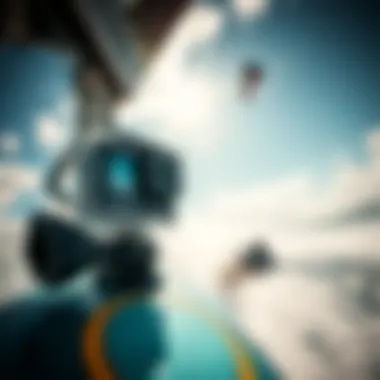
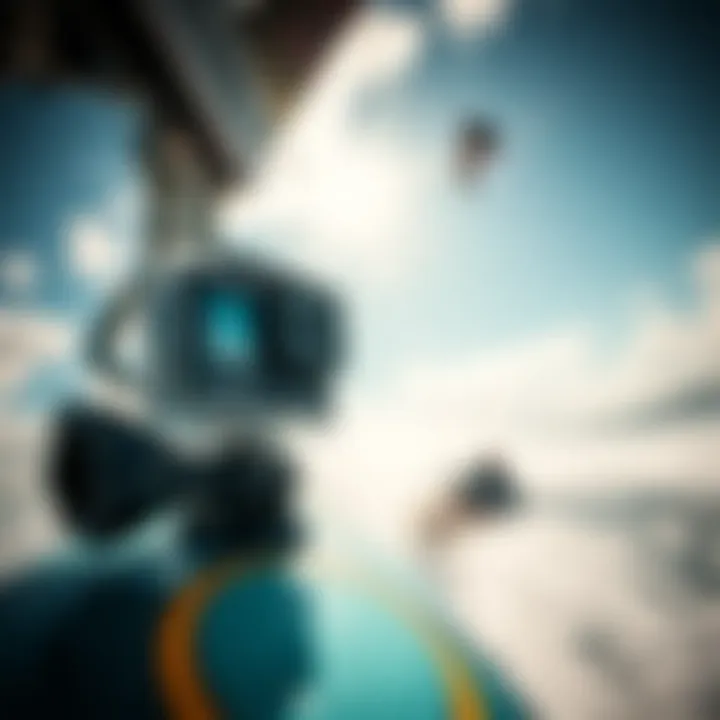
Chest Mounts
Chest mounts are known for providing an immersive perspective, making viewers feel like they are right there in the action. By strapping the camera on your chest, you can capture a first-person view of your ride, showcasing the water splashes and the handle you grip while carving through waves. This mount is particularly beneficial for wakeboarders who want to highlight their skill, as it allows for hands-free filming without interference from your hands or arms. However, some users may find that chest mounts can get in the way or restrict movements during tricks, which may not be ideal for advanced maneuvers.
Helmet Mounts
Helmet mounts have garnered a reputation for their versatility and reliability. Attaching the camera to your helmet offers a bird's eye view that can capture unique angles, especially during jumps or flips. Not only does this mount keep the camera securely fastened, but it also leaves your hands free to handle the board. Moreover, the height at which the camera is placed can enhance the footage, giving it a more dramatic flair. On the flip side, one must consider that helmet mounts can provide a less stable shot compared to other mounts—especially during high-speed maneuvers, where vibrations could muddle the clarity.
Handlebar Mounts
If you ride a personal watercraft, handlebar mounts become a practical option. They enable you to capture a forward-looking view while steering, providing a new layer of excitement to your footage. This mount can also be adjusted easily to get the desired angle while you focus on the ride. However, the downside is that they are more suitable for personal watercraft rather than traditional wakeboarding, as they may not deliver the same level of action-oriented shots as other types.
Board Mounts
Board mounts are designed to stick directly onto your wakeboard, giving you the ultimate in-ground perspective. This setup captures the action from the board’s edge, showcasing the water splashing beneath while also allowing for unique angles during tricks and jumps. It’s an excellent choice for those wanting to highlight the connection between the rider and the board. The challenge with board mounts lies in the installation; they must be affixed securely to withstand high speeds and forces. Many users favor this mount due to its ability to create compelling, action-packed footage that pulls in viewers. However, if not installed properly, it can lose adhesive grip and detach mid-ride.
"The right mount makes all the difference in showcasing not just the skill involved but also the thrill of the ride."
In summary, understanding GoPro wakeboard mounts is fundamental for capturing high-quality videos that truly reflect the excitement of your wakeboarding experiences. Each mount offers different benefits and drawbacks, allowing you to customize your filming style to match your personality and the stunts you aim to showcase.
Choosing the Right Mount for Your Needs
When it comes to capturing the thrill of wakeboarding, having the right GoPro mount makes all the difference. Every water activity has its unique nuances, and the mount you choose can significantly influence how your footage turns out. Selecting the right mount isn’t just about preference; it’s about understanding your environment, the nature of the sport, and, importantly, your own skill level.
Assessing the Environment
The environment in which you plan to capture your wakeboarding exploits can dictate the type of mount best suited for the job. First off, consider the water conditions—are you looking at flat lakes or tumultuous ocean waves? If the waters are calm, a helmet or board mount may suffice. However, if the waters are choppy, you might want to think about using a chest mount because it tends to provide a steadier shot in unpredictable conditions.
For instance, if you find yourself ripping through a wake park with obstacles, a handlebar mount might come in handy as it allows you to capture dynamic angles while navigating through ramps. Also, take into consideration the lighting conditions. Bright sunlight can wash out your footage if the camera is not properly adjusted or if it’s not angled correctly to capture the best colors. A good mount, therefore, is one that allows for flexibility and adjustment according to varied lighting—even midday sun can be problematic!
Evaluating Your Skill Level
Your expertise in wakeboarding should also heavily influence your mount choice. If you're just starting out, you might find it easier to handle a helmet mount. This option can provide a first-person perspective that is engaging and less cumbersome. Experienced riders, on the flip side, may opt for a handlebar mount or a board mount which can showcase their tricks and style in a much more dramatic way.
Moreover, think about how comfortable you are with positioning the camera and adjusting it mid-ride. More experienced wakeboarders usually have the finesse to manage multiple setups during a ride, whereas novices might find it easier to stick with one straightforward mount to avoid distractions.
"Choosing the right mount is like selecting the right surfboard; it’s gotta match your style and skill set."
Stay aware of how different mounts can affect your performance and comfort. Assessing your abilities might mean re-evaluating your mount choice down the line, especially if you find yourself advancing in skills. Regardless of your level, understanding your capabilities and the environment ensures that the footage you capture truly reflects the essence of your ride.
In summary, selecting the right GoPro mount is not a one-size-fits-all scenario. It’s essential to consider both the external conditions of your riding environment and your internal abilities as a rider. By merging these insights, you lay the groundwork for producing stunning footage that does justice to your wakeboarding adventures.
Installation Techniques for Optimal Performance
When it comes to wakeboarding, capturing high-quality footage can elevate the whole experience from just a ride to an exhilarating adventure to relive. Therefore, installation techniques play a pivotal role in ensuring that every jump, spin, and wipeout is recorded smoothly without any hiccups. Proper installation means not only affixing your GoPro correctly but also ensuring it contributes positively to the footage’s quality. Getting things right from the start can ultimately save time during the editing phase later, enhancing the overall thrill of your endeavor.
Step-by-Step Mounting Guide
Preparing Your Equipment
Before you even think about hitting the water, getting your GoPro and its accessories ready is simply crucial. Preparing your equipment involves checking your GoPro battery life, ensuring the memory card has sufficient space, and cleaning the camera lens. This is vital because a clean lens can make the difference between crystal-clear shots and those marred by smudges and scratches. A well-prepared camera guarantees that you’re not left with half-baked attempts later on. Key features like waterproof housing also come into play at this point, securing your camera against splashes and dives.
Often, people overlook details while they’re in a rush. However, by taking a moment to prepare, you set yourself up for success. The biggest advantage of prepping is confidence; knowing that your gear is ready allows you to fully immerse yourself in the activity. Don’t forget to check the straps and attachments since they’re the backbone of your setup and will influence how well the camera stays in place.
Securing the Mount
Once you’ve got everything prepped, it’s time to secure the mount. This step cannot be emphasized enough; how you secure your mount directly affects the stability of the footage captured. Tightening every screw and using the right adhesives are important practices. For example, using a strong double-sided adhesive on the board itself can significantly enhance stability.
One characteristic that stands out when securing your mount is the flexibility to adjust based on the riding conditions. Some mounts come with adjustable bases; this adaptability is a lifesaver if the weather changes or if you’re trying out different tricks. The unique feature of not just sticking, but also properly anchoring your GoPro ensures that you capture unshakeable moments.
Adjusting Camera Angle
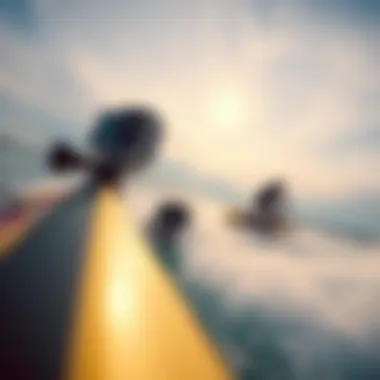
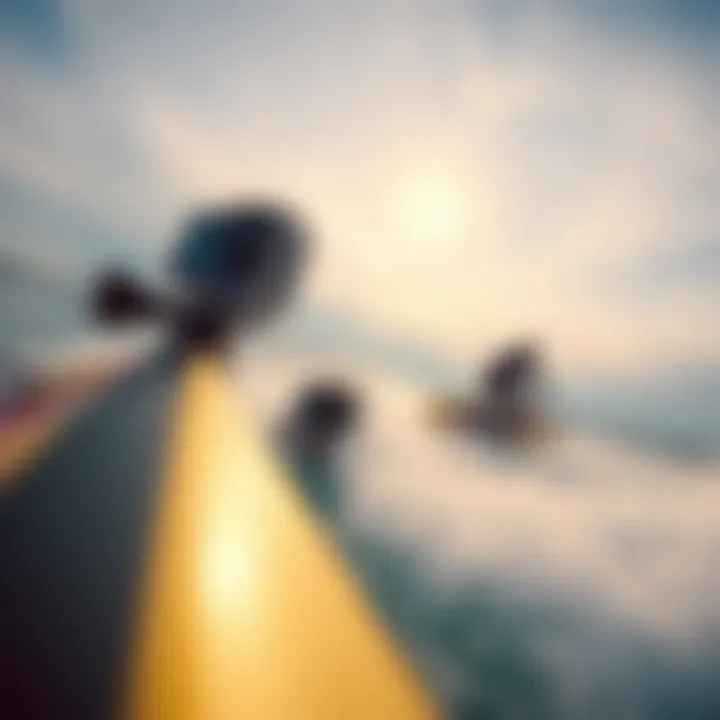
After securing the mount, it’s time for the final crucial step: adjusting the camera angle. The angle sets the tone for the footage; a poor angle can make the most breathtaking stunts look mundane. This adjustment involves tilting the camera slightly forward or backward depending on what you want to feature. If you're pulling off a wild trick, a lower angle may showcase the height and flair beautifully.
Some GoPro mounts allow you to do this on the fly, which is particularly beneficial if you notice that the first adjustment isn’t quite right after a couple of runs. Emphasizing the importance of perspective, it’s clear that capturing the right angle can enhance the narrative of your video immensely. However, keep in mind that over-adjusting can lead to inconsistencies during the ride, so finding that sweet spot is key.
Common Installation Mistakes
Even pros are not immune to common mistakes when installing their GoPro mounts. Rushing through the process, neglecting to check equipment integrity, or failing to secure the mount tightly often leads to underwhelming footage. These small oversights might not seem significant at first, but they can become glaring issues when editing or reviewing the footage post-ride.
Here are some common blunders to avoid:
- Inadequate Checks: Failing to confirm that batteries are full or the card has sufficient storage can derail the entire recording session.
- Loose Fixings: Not checking if the mount is on tight enough could lead to the camera falling off mid-ride, resulting in lost footage.
- Ignoring Angle Adjustments: Not taking time to get the right angle may waste a bunch of otherwise great moments on film.
Remember, planning and precision during installation will always pay off when you review that epic ride back at home.
Capturing Quality Footage
When it comes to documenting the thrill of wakeboarding, the quality of the footage you capture can make or break your experience. With the right equipment and settings, your GoPro can transform a simple ride on the water into a cinematic masterpiece. It's vital to understand not just how to mount your camera, but also what settings to use and how to frame your shots. This section shines a light on optimal camera settings and the artistic considerations of angle and perspective.
Optimal Camera Settings
To really get the juice flowing in your wakeboard videos, the camera settings you select are crucial. Here are several key settings you should tweak for optimal footage:
- Resolution and Frame Rate: Setting your GoPro to shoot at 1080p or higher, with a frame rate of 60 frames per second, will capture smooth action shots. If you're planning to slow down your footage in post-production, consider using 120 fps or even 240 fps.
- Field of View: The GoPro offers different fields of view, such as wide, linear, and narrow. A wide field will add drama and capture the full scope of the environment, which is perfect for wakeboarding—a sport that’s all about the adrenaline and surroundings.
- ProTune Settings: If you want your footage to look more professional, enabling ProTune allows for greater control over aspects such as color, ISO limit, and sharpness. Experimenting with these settings can yield stunning results, particularly in challenging lighting conditions.
Remember: Smart settings can make a significant difference. Don't be afraid to play around and find what suits your style best!
Angle and Perspective Considerations
Capturing quality footage is equally about angle and perspective as it is about settings. Here are some angles and perspectives that can elevate your video:
- Low Angles: Placing the camera close to the water not only gives the viewer an exhilarating sense of being part of the action but also allows for some breathtaking shots as the board glides across the surface.
- Overhead Shots: Utilizing a board mount to secure the camera on your board can provide fantastic aerial shots as you navigate through waves and jumps. This perspective can help showcase your skills effectively.
- Follow Cam: If there's someone else filming, having them follow you on a boat or jet ski can present an exciting viewpoint, showing the raw emotion of the ride and the vastness of the water.
- First-Person View: The helmet or chest mount allows viewers to see from your perspective. It immerses them in the experience and gives a direct connection to your movements and reactions while wakeboarding.
When all these elements are harmonized, the footage will not just look good; it will actively engage the audience. Each angle serves a unique purpose, whether it’s to highlight your technical tricks or the stunning backdrop of the water.
By focusing on optimizing your camera settings and experimenting with various angles, the quality of your footage can go from ordinary to extraordinary, ensuring your wakeboarding adventures are captured just the way you intended.
Safety Considerations
Safety considerations are crucial when using GoPro wakeboard mounts, especially in high-speed water sports. Understanding the risks associated with equipment failure or improper handling can be the difference between a great experience or one filled with mishaps. This section will delve into essential safety protocols and the correct ways to manage your GoPro, ensuring you can both enjoy your ride and capture those unforgettable moments without a hitch.
Mounting Safety Protocols
Proper mounting is not just about securing your camera; it is about ensuring your safety and that of others around you. Here are some key protocols to keep in mind:
- Use Quality Mounts: Always opt for reliable and durable mounts specifically designed for GoPro cameras. They may be pricier, but they’re worth every penny if they keep your camera secure.
- Check Before Each Use: Before you hit the water, inspect your mount for any wear and tear. Check screws and attachments to ensure they're tightly secured. A loose mount could cause your camera to detach unexpectedly.
- Avoid Dangerous Areas: Be mindful of where you’re mounting your camera. Placing a mount in areas prone to collisions—like near your feet while you’re wakeboarding—could pose risks not only to you but also others skiing or boarding nearby.
"Your safety is not just about gear; it's about making smart choices."
GoPro Handling During High Activity
When you’re wakeboarding, the last thing on your mind should be worrying about whether your GoPro is safe or not. Handling it the right way not only helps in capturing stunning footage but ensures that it remains intact through all the bumps and jumps. Here are some best practices:
- Secure Cables and Accessories: If you’re using additional accessories alongside your GoPro, make sure any cables are secured. Loose cables can get caught in the board or handle, leading to accidents.
- Keep it Tethered: This is especially important for high-speed adventures. Consider using a floaty strap or tether, even if your mount feels secure.
- Be Mindful of Water Exposure: While GoPro cameras are waterproof, the accessories may not be. Make sure that anything not rated for water exposure is kept dry, as moisture can damage equipment.
- Know Your Surroundings: Stay aware of your surroundings while filming. High speeds and obstacles can lead to unexpected situations. Always prioritize your safety above getting the perfect shot.
By observing these safety considerations, wakeboarders can significantly minimize risks, ensuring a smoother experience both on the water and in front of the camera. It’s key to remember that the thrill of wakeboarding shouldn't come at the cost of safety.
Maintenance of Your GoPro Mount
Maintaining your GoPro mount is akin to ensuring the heart of your capture system is healthy. A well-cared-for mount not only prolongs longevity but also guarantees that your recordings maintain a high level of quality and stability. Given that many wakeboarders and outdoor enthusiasts subject their mounts to harsh conditions, understanding the nuances of maintenance is essential. This not only preserves functionality but also enhances your overall experience while using your GoPro.
Cleaning Guidelines for Mounts
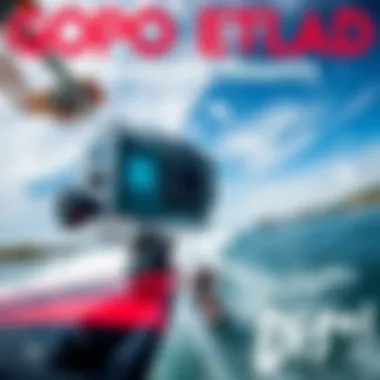
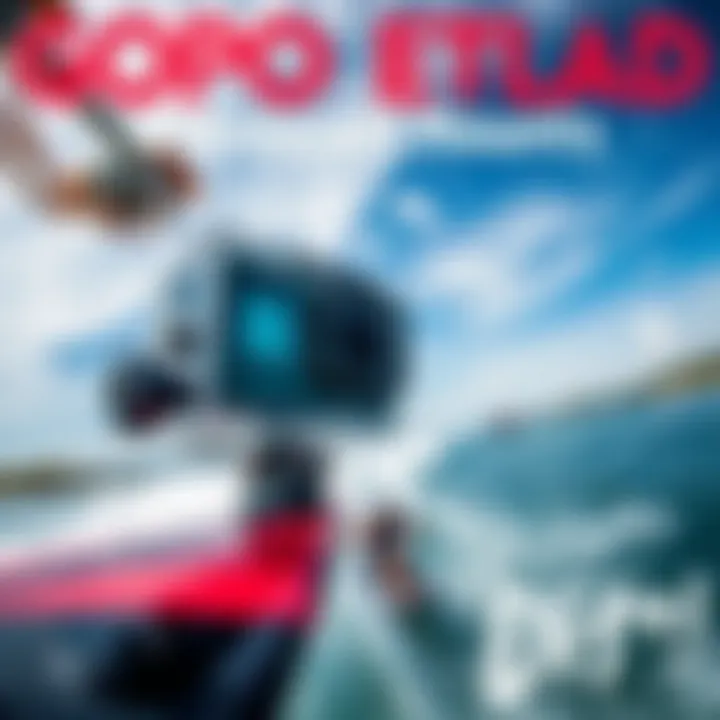
Regular cleaning of your GoPro mount is crucial, especially after exposure to saltwater, sand, or other potentially damaging elements. Here are some guidelines to consider:
- Rinse with fresh water: After each use, particularly in saltwater, rinse the mount with fresh water to remove any residue. This step helps prevent corrosion and buildup.
- Use mild soap: For a deeper clean, mix a few drops of mild soap in water. Soak a soft cloth in the solution and wipe down the surface of the mount. Avoid strong chemicals as they can degrade the material.
- Inspect for wear and tear: While cleaning, take a moment to check for any damage or loose screws. Addressing these issues early on can save you from potential failures during crucial moments in your wakeboarding sessions.
- Dry thoroughly: After washing, ensure the mount is completely dry before storing it. Moisture can lead to rust or mildew accumulation, especially in those hard-to-reach nooks and crannies.
In essence, regular cleaning keeps your equipment in top shape and ready for the action whenever you are.
Storing Your Equipment Properly
Storing your GoPro mount correctly can significantly affect its longevity. Here are a few strategies to make sure you’re doing it right:
- Choose a dry environment: Storing your mount in a cool, dry place will help to avoid moisture build-up, which can weaken the materials.
- Use padded cases or bags: Invest in a padded case for your mounts. This gives extra protection against accidental drops or bumps that might compromise their integrity.
- Avoid stacking heavy items on the mount: When storing items, keep heavy gear from sitting on top of your mounts. Weight can bend or warp components, potentially affecting future performance.
- Keep components together: When you're done with wakeboarding for the day, pack all the parts of your mount together. This minimizes the risk of losing small pieces and makes reassembly much easier next time.
As the old saying goes, "A stitch in time saves nine." Proper maintenance and storage not only keep your GoPro mount functional but also save you from hassle in the long run, ensuring you’re always ready for your next adventure.
Comparative Analysis of Different Mounts
When stepping into the watersport realm, understanding the various GoPro wakeboard mounts becomes essential for capturing those hair-raising moments. Each mount has its own flair, and knowing their differences can significantly enhance your filming experience. A comparative analysis sheds light on the specific elements that matter most, including versatility, stability, and image quality.
Pros and Cons of Each Type
Every mount serves a unique purpose, akin to choosing tools for a specific trade. Below is a detailed rundown of popular GoPro wakeboard mounts, emphasizing their strengths and weaknesses:
- Chest Mounts
Pros: - Helmet Mounts
Pros:Cons: - Handlebar Mounts
Pros:Cons: - Board Mounts
Pros:
- Provides a first-person perspective that's immersive.
- Natural hand placement, allowing for ease of grabbing the board.
- Stability during fast movements.
Cons: - Limited view of surrounding action.
- Can be uncomfortable for some users after prolonged use.
- Higher position offers a great panoramic view.
- Secure attachment means less vibration.
- May feel heavy on the head; can impair balance.
- Position might not capture footwork effortlessly.
- Great for riders who value angle adjustments on-the-fly.
- Versatile for various activities like biking or skateboarding.
- Can shake significantly if not attached well.
- May be tricky to set up in tight spaces.
- Direct view of the action as it happens on the board, capturing all the maneuvers.
- Provides stability unique to a fixed position on the equipment.
Cons: - Potential damage to the board’s surface.
- Difficult to reposition once placed.
In summation, while each mount comes with its own set of benefits and drawbacks, the choice ultimately depends on the perspective one wishes to capture and the kind of experience they aim for in documenting their water adventures.
User Experience Reviews
To round out this comparative analysis, user experiences can provide invaluable insights. Feedback from fellow adventurers often highlights how various mounts perform in real-world scenarios:
- Chest Mounts: Users frequently appreciate the immersive feel but caution about the initial discomfort. Many find that wearing a tighter fitting vest can make a noticeable difference.
- Helmet Mounts: High praise goes to those who relish in capturing a broader view, but the common concern is ensuring the mount does not shift while riding.
- Handlebar Mounts: Several reviews champion the flexibility of angle adjustments, but users also express frustration over unwanted vibrations, particularly in bumpy ride conditions.
- Board Mounts: Riders often rave about the genuine feel of capturing board tricks, but there are warnings to check the mount’s firmness before hitting the water—nobody wants to lose their gear mid-session.
In the end, evaluating detailed user experiences alongside a thorough review of each mount's pros and cons can empower you to make a well-informed decision, setting you up for success in capturing your dynamic water escapades.
Closure and Final Thoughts
In the realm of water sports, the significance of GoPro wakeboard mounts cannot be understated. Both seasoned wakeboarders and newcomers alike have the opportunity to elevate their video capturing experience through a solid understanding of these mounts. From the right choice of mount to its installation and maintenance, each aspect plays a pivotal role in recording breathtaking footage and ensuring safety while engaging in thrilling activities.
Summarizing Key Insights
As we wrap things up, a couple of crucial points emerge. Firstly, understanding the various types of mounts available—such as chest mounts, helmet mounts, and board mounts—is vital. Each type has its own set of strengths and weaknesses, tailored to specific filming styles and conditions. For instance, while a chest mount provides a first-person perspective, it might not capture the surroundings as vividly as a board mount.
- Diverse Mount Options: Each mount serves a unique purpose based on the desired shot and activity level.
- Installation Matters: Proper installation ensures that the camera remains secure, allowing you to focus on your ride rather than worrying about your equipment.
- Angle is Everything: The angle at which you shoot video directly affects the final output. Experimenting with different perspectives can yield compelling results.
In essence, mastering the integration of these mounts into your wakeboarding adventures not only enhances the quality of the footage but also adds to the rhythm of your ride.
Encouraging Responsible Usage
While capturing fantastic footage is exhilarating, it’s essential to approach this with responsibility. Here are a few key guidelines to keep in mind:
- Prioritize Safety: Always ensure your equipment is properly secured. A loose mount can not only ruin a good shot but may also pose risks to you and others on the water.
- Be Mindful of Surroundings: Remember that you're not the only one on the water. Being considerate to fellow wakeboarders and boaters enhances the experience for everyone.
- Environmental Consideration: Respect local wildlife and aquatic ecosystems. Avoid disruptive behavior when filming in natural settings.
Above all, as exciting as capturing those jaw-dropping moments can be, it should never come at the cost of safety and respect for others. A responsible approach to using GoPro mounts will contribute to a memorable and safe experience on the water.
The best footage often comes from not just the right equipment, but also the right mindset.



